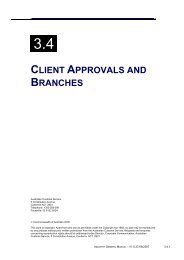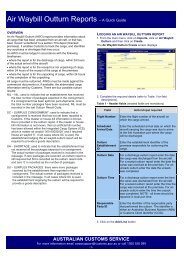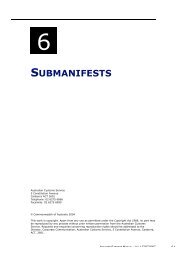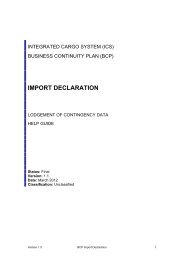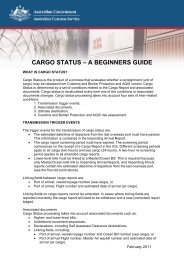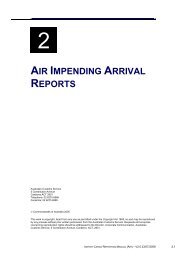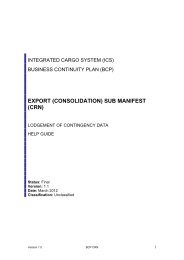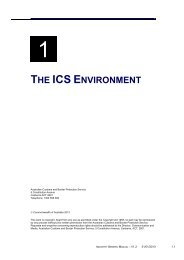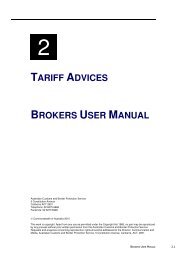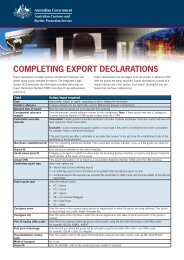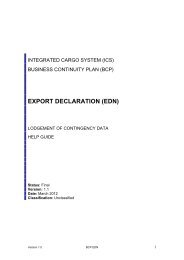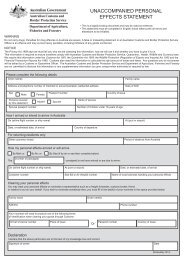Module 19 - Self Assessed Clearance Declarations - Cargo Support
Module 19 - Self Assessed Clearance Declarations - Cargo Support
Module 19 - Self Assessed Clearance Declarations - Cargo Support
Create successful ePaper yourself
Turn your PDF publications into a flip-book with our unique Google optimized e-Paper software.
SELF ASSESSED CLEARANCE DECLARATIONS<br />
Note: The Customs Value (CVAL) is the value of the goods on which duty will be<br />
charged. Generally, the value used is the free on board (FOB) value of the goods,<br />
which is the value of the goods excluding overseas transport and insurance.<br />
Depending on the invoice terms, other charges may be included and excluded<br />
from the value of the goods to determine the customs value. Much of the<br />
information required to determine the customs value can be obtained from the<br />
invoice.<br />
Step 40. (Optional) In the GST Exemption Code field, enter the code for<br />
exemption of Goods and Service Tax (GST) for the goods, if any.<br />
Note: the GST exemption code must be selected from a table of codes. Click on<br />
the book icon next to the GST Exemption Code field and select the appropriate<br />
code from the reference table. The selected value will populate the GST<br />
Exemption Code field.<br />
Step 41. (Optional) In the WET Exemption Code field, enter the reference code<br />
that exempts the wine from Wine Equalisation Tax (WET).<br />
Note: the WET exemption code must be selected from a table of codes. Click on<br />
the book icon next to the WET Exemption Code field and select the appropriate<br />
code from the reference table. The selected value will populate the WET<br />
Exemption Code field.<br />
Step 42. (Optional) Select the WET Quote Ind checkbox to defer payment of<br />
wine equalisation tax until a later date.<br />
Step 43. (Conditional) In the Quantity/Unit field, enter values for the quantity and<br />
the quantity unit for the goods.<br />
Note: the tariff classification and statistical code determines when quantities are<br />
required on a tariff line and therefore if data must be input into the Quantity/Unit<br />
field. Click on the Qty hyperlink to enter values for quantity and quantity unit for the<br />
goods.<br />
Note: users can select the Remove Line checkbox to delete the line when the<br />
Tariff Line Create screen is next saved.<br />
INDUSTRY IMPORTS MANUAL – V1.1 27/08/2007 <strong>19</strong>.25



